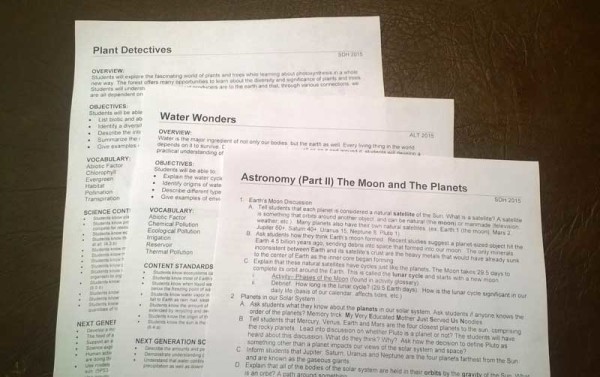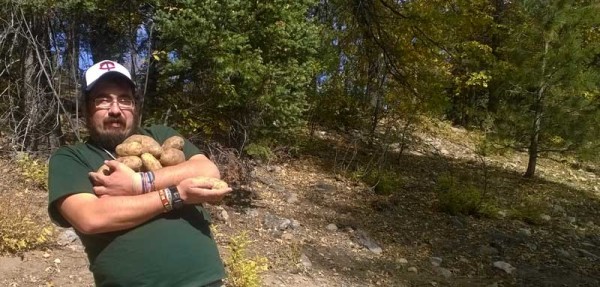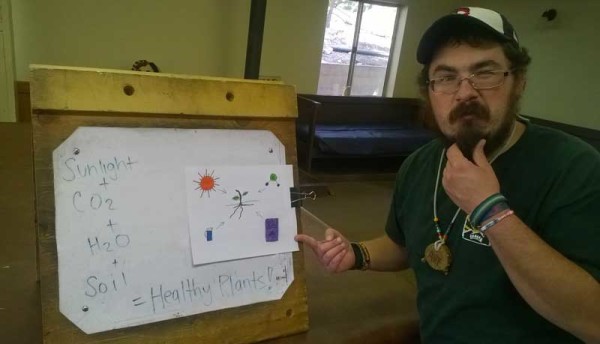 In the recent Hollywood blockbuster, The Martian, director Ridley Scott focuses his view on potential living conditions for humans on Mars. The movie follows the Ares III astronaut crew as they explore Mars and take samples for analysis from the red planet.
In the recent Hollywood blockbuster, The Martian, director Ridley Scott focuses his view on potential living conditions for humans on Mars. The movie follows the Ares III astronaut crew as they explore Mars and take samples for analysis from the red planet.
A sudden storm forces evacuation, but one astronaut doesn’t make it to the shuttle.
Left for dead, Matt Damon manages to survive on the desolate planet by using, wait for it…….SCIENCE!
It happens that his character, being an astronaut that works for NASA, knows a lot about science, especially organic chemistry (he is the botanist on the team). Using his big brain, he decides to grow potato plants for sustenance by fertilizing the soil with the waste kept by the team (nitrogen rich), and by making his own water. The results in the movie are spectacular; he manages to grow plants on a planet without any other forms of life.
Now, we need to look at the hard science behind the movie to see if all this Mars stuff is really possible and how we can use it to become better teachers. Let’s get started.
Question 1: Can Mars soil be used to grow crops?
According to an experiment conducted in the Netherlands, which found soil on Earth that is chemically close to soil we found on Mars, the answer is yes. 1 The scientists who conducted the experiment also used poor soil found near the Rhine River, and soil that is close to the composition of the moon. The best results were from the samples grown in Mars soil, with the one true caveat being that we do not know enough about growing conditions to mimic the movie completely.
Of course, we would need to figure out how much water Martian soil can hold, how light would come into play (Martian days are about 40 minutes longer, but it is also further from the Sun), and how the atmospheric conditions can affect plant life (the atmosphere is less than 1% the thickness of Earth, and the air composition is different).
Question 2: Can Mars provide the other growing essentials?
What else do plants need?
- CO2: The atmosphere of Mars is mostly (over 95%) carbon-dioxide, which is the gas in the air that plants use to make sugars through photosynthesis.
- H2O: Plants also need water, which scientists are now saying may exist on Mars in liquid form, and they have discovered it in frozen form as well. 2 In the movie, he burns hydrazine (a micro-propellant used in maneuvering spacecraft) to release the hydrogen, which he then mixes with oxygen. Tada, water (2 hydrogen, 1 oxygen).
Can We Do It?
 So, plants need CO2 (Mars has that in abundance), H2O (a slab of ice bigger than Texas and California has been discovered, along with probable liquid water under the ice caps, and if that fails, astronauts can make water through the very dangerous process listed above), nitrogen rich soil (see the experiment described by the Netherlands), and sunlight to grow.
So, plants need CO2 (Mars has that in abundance), H2O (a slab of ice bigger than Texas and California has been discovered, along with probable liquid water under the ice caps, and if that fails, astronauts can make water through the very dangerous process listed above), nitrogen rich soil (see the experiment described by the Netherlands), and sunlight to grow.
If we can copy the conditions of Mars (gravity, radiation levels, amount of sunlight it receives, soil water retention), we can have a complete answer.
It seems to me that the proverbial ball is in Mars’ court now.
 Hey Art…can you bring this back to Outdoor Education?
Hey Art…can you bring this back to Outdoor Education?
Finally, we need to apply this information to OE programs in a way that is understandable.
- Plant Class: for starters, using it to teach a plants class could be beneficial. Have students hypothesize whether or not crops can be grown on Mars. Most classes list the components needed by plants to grow, so this movie can be utilized to show the extreme side of botany.
- Water Class: good OE programs should also have a water class, which can be tied directly to most other subjects. If a planet or other terrain does not have its own readily available water supply, this movie shows that making water is a chemical reaction. This makes water more understandable to students, and shows that water is not some miracle elixir that does not behave by scientific standards, but that it is predictable like any other compound.
- Astronomy Class: and the easiest connection to make; Astronomy! Not only are we discussing science in relation to another planet, but we are using this science to describe what is happening on Earth. Earth, having a denser atmosphere, more gravity, and liquid water, made it possible to grow crops here. Mars started out billions of years ago with water, but the lack of atmosphere and gravity may have caused it to rapidly lose the liquid water on the surface .
 Closer
Closer
This movie shows the importance of science on Earth, and it also validates the study of Astronomy by OE programs (for any program looking for the big picture tie-ins, this connects Astronomy to plants, water, geology, etc). Who knew science could be so much fun!?
At High Trails Outdoor Science School, we literally force our instructors to write about elementary outdoor education, teaching outside, learning outside, our dirty classroom (the forest…gosh), environmental science, outdoor science, and all other tree hugging student and kid loving things that keep us engaged, passionate, driven, loving our job, digging our life, and spreading the word to anyone whose attention we can hold for long enough to actually make it through reading this entire sentence. Whew…. www.dirtyclassroom.com




Comments are closed.